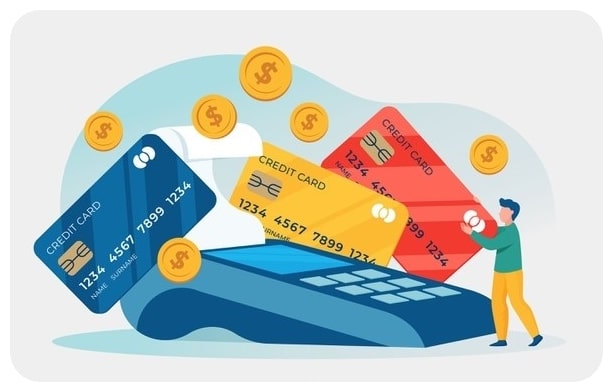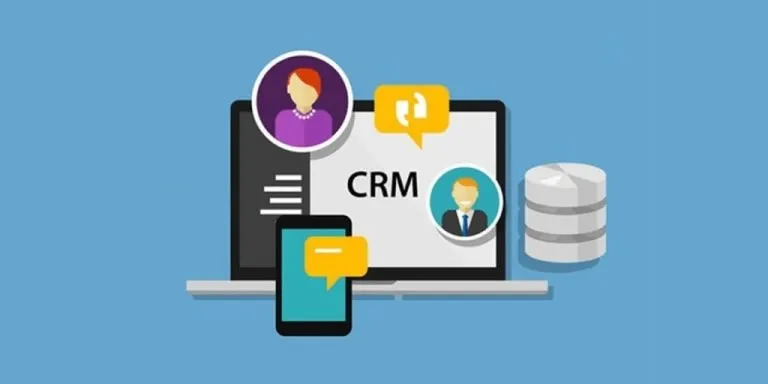Advertising disclosure
Hosting Canada is community-supported. We may earn a commission when you make a purchase through one of our links. Read Disclosure.
How to Accept Credit Card Payments in Canada
These days, nearly everyone shops with their credit cards. They’re deemed more secure than cash and a lot easier to carry around. If you’re a business owner, accepting card payments is crucial. You want to make the buying process as convenient for your customers as possible, lest you lose them. If you want to know how to accept credit card payments in Canada, we have all the steps for in-person, online, and even international transactions.
How to Accept Credit Card Payments Online
If you’re wondering how to accept credit card payments online in Canada, there are several factors to consider. Things like gateway services, online payment portals, transaction fees, etc. Here’s what you’ll need:
1. Online Store/Website
If you’re accepting payments online, you probably have an online store or website for customers to make purchases. You’ll need this in place before starting anything else. Depending on your site, you may need for payment portals, so do your homework or talk to your website developer about preparations.
2. Payment Gateway
This is the method the customer uses to provide payment information. In brick and mortar stores, it’s usually a “point-of-sale,” (POS) terminal, such as where you insert your credit card. For online payments, this is the “checkout” portal where card and billing info is given. The transaction information is then securely sent for further processing.
3. Payment Processor or Merchant Account
To process online payments, you’ll need to select a payment gateway service. Be aware that these services charge merchant transaction fees, so pay attention to these rates and find the best fit for your budget. It’s an unavoidable cost for the ability to offer your customers credit card options.
Depending on the size of your business and how many transactions you anticipate, you may decide on a merchant service or a credit card processing provider. Both are helpful methods to accept payments online, both help you securely get your funds, and both have varying fees. Here’s a bit more about them:
Payment processor: A company/service that aids in transaction processes between customers and businesses. They handle transferring money between the customer and the business. They also verify the customer’s payment info, make sure there is enough money from the customer to fund the transaction, and securely arrange the transfer of money to the business’s bank. This term is often used in a broader sense to encompass various payment gateway services.
Merchant account: A particular bank account that lets businesses receive electronic payments, such as credit cards. It holds the money from the customer’s purchase until it’s moved to the business’s bank account, acting as a go-between. They do much of the same things that payment processors do.
Another option is a third-party payment platform or marketplace. These aren’t associated with particular banks, but allow you to accept transactions without needing your own account with a merchant or payment processor. PayPal is an example of this.
4. Select an Acquirer
An acquirer is also known as an acquiring bank. They are the financial entity that processes transactions for the business, sending the information to credit card networks and issuing banks. They get this information from the payment processor we mentioned earlier, passing it along the chain of events. Acquirers are important because they underwrite the business and take on the risk of disputes, fraud, chargebacks, and other payment problems. They also help authorize transactions with issuing banks. Some payment services include acquirer services, in which case you won’t need a separate entity, you’d have your payment processor and acquirer all in one. Otherwise, you’ll need to choose an acquirer.
Understanding the Process
The above steps all work together in mere seconds. Here’s how it all combines:
- Credit card holder (customer) makes an online purchase with the business via their online interface (payment gateway)
- The payment processing service (payment processor or merchant account), sends the transaction information to the acquiring bank (acquirer)
- The acquirer sends it to the credit card network, such as Visa
- The info is then sent to the issuing bank where the customer’s funds are, at which point the purchase is approved or declined
Because there are so many moving parts and financial entities in credit card transactions, expect small recurring fees such as interchange, transaction, processor, and monthly fees.
How to Accept Credit Card Payments in Person
Now that you know how to accept credit card payments in Canada for online purchases, here’s how it works for in-person interactions:
1. Obtain a Chip Card Reader/ Payment Terminal
There are plenty of companies that will provide you with credit card processing equipment. They usually come with transaction fees, setup fees, and terminal rentals. There are mobile, countertop versions, or even cash registers, with a lot of features to choose from, depending on your needs.
2. Obtain a POS (point-of-sale) System
POS systems interface with card readers, working together. Your POS provider will determine what kind of system you use. It can be simplistic and standardized, or personalized for your specific requirements.
3. Other Steps
From here, the steps described in the online payment section are repeated here. You’ll need:
- A payment processor of some kind
- An acquiring bank (unless your processor performs both services)
There are some differences between online and in person credit card transactions. For one, your processor rates may be better for brick-and-mortar businesses. “Card present,” situations tend to be more secure because it require a physical interaction and is less threatened by hackers, malware, and credit card fraud. This extra security makes you a lower risk for your payment processing service, which means you may get better rates. It’s also less work for them because they don’t have to authenticate nearly so much from the customer’s account, such as the card verification code on the back or their address. This means fewer fees for you.
How to Accept Credit Card International Payments in Canada
Payments in Canada
If you have global customers, it’s important to know how to accept international credit card payments in Canada. We’ve already covered online and in person payments, so we won’t repeat that here. What will be different are foreign transaction fees, exchange rates, etc. Luckily, there are internationally accepted credit card companies like MasterCard and Visa that make it simpler to receive payments. Besides that, typically the customer’s issuing bank will deal with rate conversions. You’ll get your funds in Canadian dollars and the issuing bank will handle the conversion process. Still, there are plenty of gotchas to be aware of. Here are some things you’ll need to do business on a world-wide scale:
1. International Payment Gateway
Your payment gateway needs to be able to juggle multiple currencies and convert prices in these currencies. You may even need multilingual functions too. There are lots of third-party companies who can help get you set up.
2. A Payment Processing Service with International Capabilities
Whatever type of provider and acquirer you use to process transaction information, make sure they are authorized to handle global interactions. There are plenty of them out there, just be ready for higher fees.
Expenses to Know
There are already several expenses with domestic credit card processing and international ones only increase them. Here are some examples:
- Currency exchanges means your processors have more work to do. Expect higher fees
- Higher risks of disputes and chargebacks, which get passed on to the business
- Higher risks of fraud and security problems. This could not only cost you in terms of protecting your customer’s financial information, but the payment processors will have more work to do too
- You’ll have more third-party intermediaries to deal with, they all want their piece of the pie
- Border fees from credit card companies
Be aware of regulations and taxes in different countries that may affect your revenues
Conclusion
Hopefully this helps you understand how to accept credit card payments in Canada. The biggest thing is to do your homework. Who you choose to help you with your payment gateway and processing your payments will greatly affect your expenses. Take into account your expected sales. Do you want to be a brick and mortar company, an online one, or both? Do you want to accept international payments? Are you ready for the costs that come with it? If you have an in-demand product, it may be worth it. Once you have all these points nailed down, you’ll know exactly what you do and don’t need so that you’re not paying more than you have to.











